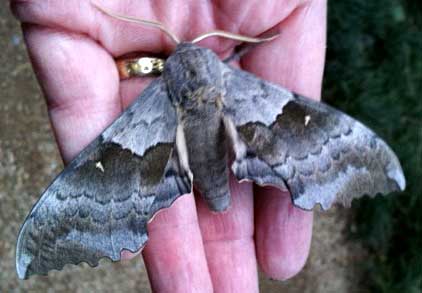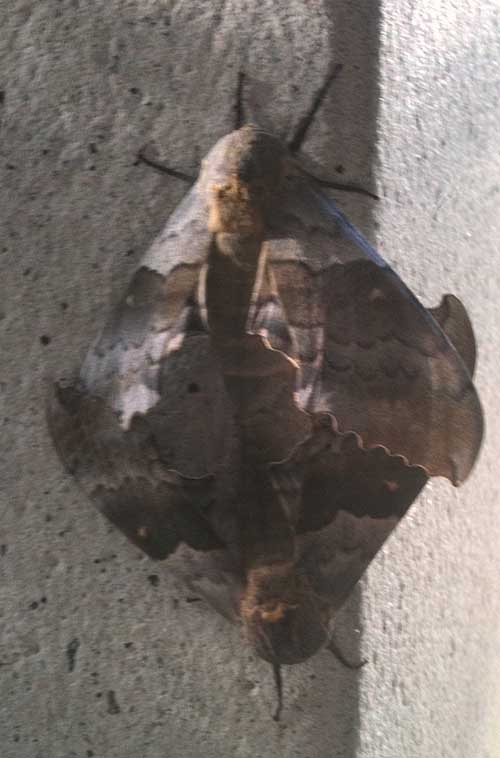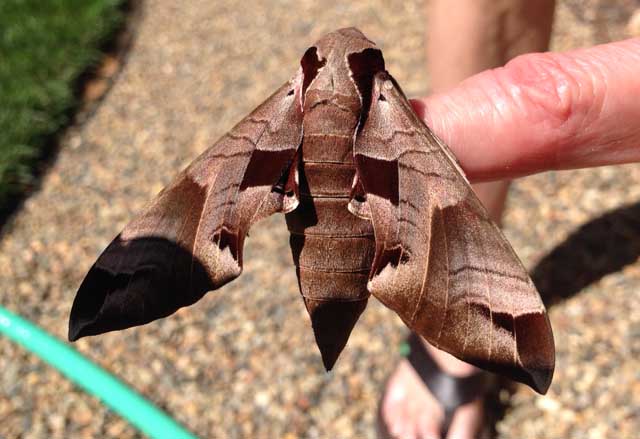Sacramento County
Sphingidae

Pachysphinx occidentalis, Sacramento, Sacramento County, California,
June 4, 2011, courtesy of Earl Byron, Ph.D..
|
|
Created/dedicated as per personal communication with Earl Byron, Ph.D., June 5, 2011; June 14, 2012 Updated as per James P. Tuttle's The Hawk Moths of North America, June 5, 2011. Updated as per personal communication with James Simon (Eumorpha achemon); May 18, 2014 |


James P. Tuttle's The Hawk Moths of North America is an excellent resource.
This page is inspired by and dedicated to Earl Byron, Ph.D., Senior Technologist/Aquatic Science, CH2M HILL, Sacramento, California.
Earl identified and sent me the image of the Pachysphinx occidentalis, found (June 4, 2011) In Sacramento, under a poplar tree.
Please help me develop this list with improved, documented accuracy by sending sightings (species, date, location), preferably with an image, via email to Bill Oehlke.
May thanks to James Simon who sends the following image of Eumorpha achemon.

Eumorpha achemon, Sacramento, California,
May 15, 2014, courtesy of James Simon.
"We noticed the pinkish color at the base of the wings but didn't get a photo of the color. Your site said that there were no Sacramento sightings so I thought if we had this right it would be of interest."
Sphinginae subfamily
Smerinthini Tribe:
Macroglossinae subfamilyDilophonotini Tribe:
Philampelini Tribe:
Macroglossini Tribe:
|
Enjoy some of nature's wonderments, giant silk moth cocoons. These cocoons are for sale winter and fall. Beautiful Saturniidae moths will emerge the following spring and summer. Read Actias luna rearing article. Additional online help available.
Use your browser "Back" button to return to the previous page.
This page is brought to you by Bill Oehlke and the WLSS. Pages are on space rented from Bizland. If you would like to become a "Patron of the Sphingidae/Catocala Sites", contact Bill.
Please send sightings/images to Bill. I will do my best to respond to requests for identification help.
 Show appreciation for this site by clicking on flashing butterfly to the left. The link will take you to a page with links to many insect sites. |